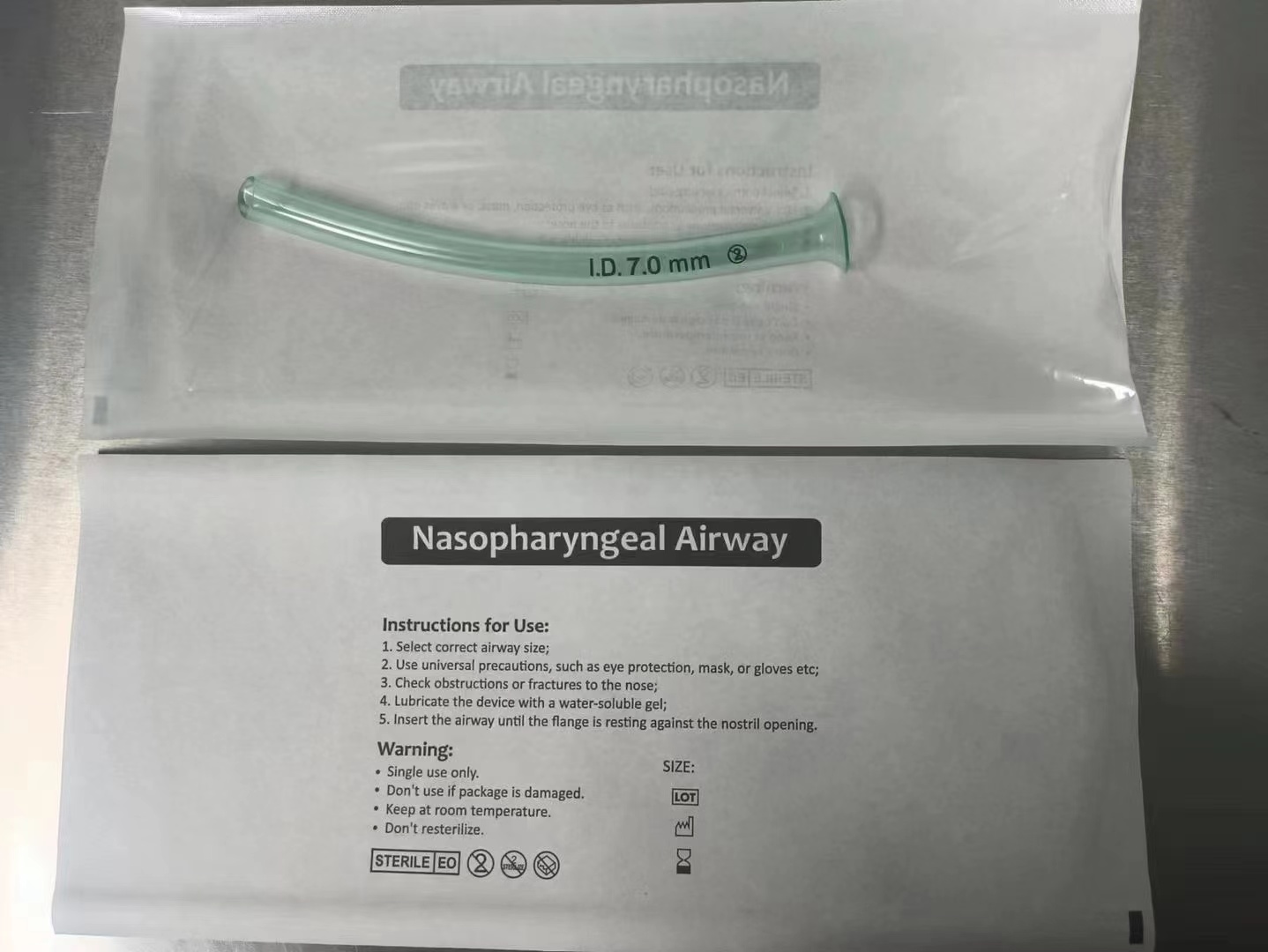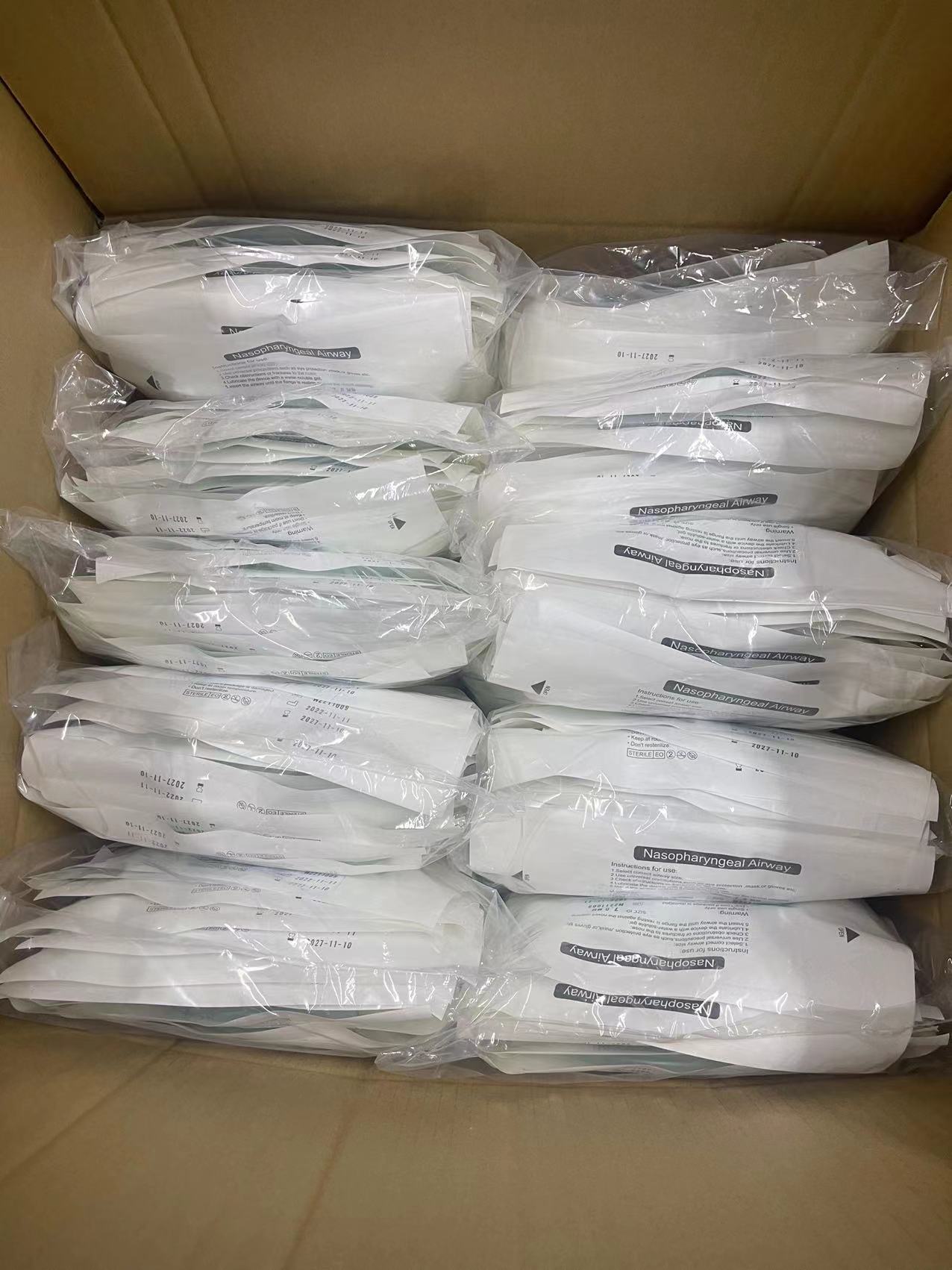

Clinicalapplication of nasopharyngeal airway

The nasopharyngealairway is especially suitable for the failure of oropharyngeal airwayplacement, or the situation where it is difficult to place the oropharyngealairway, such as difficulty in opening the mouth, too small mouth opening, oraldeformity, etc. Since the nasopharyngeal airway does not enter the oral cavity,Therefore, it is suitable for intraoral surgery. Generally, it is suitable forthe application of oropharyngeal airway, and most of them are also suitable forapplication of nasopharyngeal airway.
Compared with theoropharyngeal airway, the nasopharyngeal airway has more stable hemodynamicchanges, so it is easier for conscious or semi-conscious patients to tolerate,and it is necessary to keep the artificial airway for a long time whenaccompanied by airway obstruction. For patients with stable hemodynamics,nasopharyngeal airway should be the first choice.
1 Clinicalanesthesia
The use ofnasopharyngeal airway during anesthesia can be roughly divided into three situations:airway management without intubation, tracheal intubation during induction ofgeneral anesthesia, and after extubation of the tracheal tube:
(1) Applied toairway management without intubation, including prevention and treatment ofupper airway obstruction under various anesthesia methods. It is often used foroutpatient surgery anesthesia. Because outpatient surgery is usually small andtakes a short time, it is often used Intravenous general anesthesia, such aspainless abortion, painless gastroscopy, colonoscopy examination and treatment,etc., if you encounter obese patients, upper airway obstruction is almostinevitable, nasopharyngeal airway is effective for outpatient surgery;
(2) During theanesthesia induction period of general anesthesia with tracheal intubation, thedifficult airway can be improved by presetting the nasopharyngeal airway, andthe acute upper airway obstruction of adult patients before tracheal tubeinsertion can be relieved;
(3) Applied afterthe removal of the tracheal tube. Since the anesthetic drug has not beencompletely metabolized in the body, if the tracheal tube is removedprematurely, it is easy to cause airway obstruction caused by tongue fallingback. For obese patients, the nasopharyngeal airway can also better maintaingeneral anesthesia The patency of the upper airway during the recovery period.For patients with severe obstructive sleep apnea-hypopnea syndrome,nasopharyngeal airway plays an important role in reducing postoperativecardiovascular accidental death.
2 First aidresuscitation
According to theprinciple of the nasopharyngeal airway, the pharyngeal end of thenasopharyngeal airway after placement is close to the glottis to support theposterior pharyngeal wall, thereby releasing the pressure of the pharyngealcavity on the glottis and maintaining the airway. The nasopharyngeal airway canbe connected Therefore, in case of difficult airway, nasopharyngeal airway canalso be used as an effective first aid tool. "2010 American HeartAssociation Guidelines for Cardiopulmonary Resuscitation and CardiovascularEmergency Aid" advocates that in the process of emergency resuscitation,the first aid should be Use supraglottic ventilation instead of endotrachealintubation, and nasopharyngeal airway is one of the important options.
Due to the lowinjury of nasopharyngeal airway, the application of nasopharyngeal airway isthe safest way to solve acute upper airway obstruction in infants. Duringcardiopulmonary resuscitation, nasopharyngeal ventilation can be placed if noadvanced airway is established for artificial ventilation with simplerespirators and masks.
3 Critical care
In the Departmentof Respiratory Medicine and ICU, the nasopharyngeal airway can be used as anauxiliary device for non-invasive respiratory therapy. For example, forpatients with coma, epileptic seizures, and patients with difficulty in openingtheir mouths, the nasopharyngeal airway has become the preferred ventilationdevice. Especially for upper For critically ill patients with airwayobstruction, the nasopharyngeal airway can be placed easily and quickly, whichcan effectively solve the problem of difficult airway management. For someother rare diseases, such as Pierre Robin (Pierre Robin syndrome) patients, themain manifestations For micrognathia, tongue root drop and inspiratory airwayobstruction, the use of nasopharyngeal airway can effectively solve the airwayobstruction.
